Name the following structures:
1, 3 & 5 OR 2,4 & 6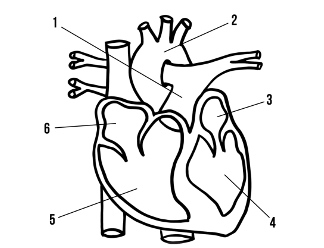
1 Pulmonary Artery
3 Left Atrium
5 Right Ventricle
2 Aorta
4 Left Ventricle
6 Right Atrium
Complete the following sentences
Systemic Circulation is blood flowing from the (which ventricle) to the (which destination).
Pulmonary Circulation is blood flowing from the (which ventricle) to the (which destination).
Systemic Circulation is blood flowing from the left ventricle to the entire body.
Pulmonary Circulation is blood flowing from the right ventricle to the lungs.
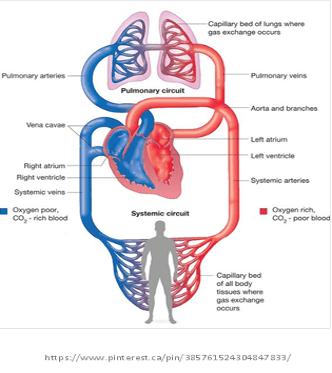
What are the three lines of defence in our Immune System? (give an example of each line of defence).
1. First LOD - Barriers (ex. Skin, Tears, Snot, Earwax, Eyelashes etc.)
2. Second LOD - Inflammatory Response (ex. swelling, redness & increase in temeprature)
3. Third LOD - The Immune Response (Macrophages --> Antigens & T cells --> B cells & Antibodies )
What are the three roles of the Lymphatic System?
1. to collect and return leaked proteins and interstitial fluid, including plasma (fluid portion of blood) to the blood → to help maintain fluid balance
2. to defend the body against disease
3. to absorb lipids from the intestine and transport them to the blood. The fats are absorbed inside lacteals (lymphatic capillaries) within villi of the small intestine.
What Antigens & Antibodies do the following Blood Types Contain:
Type A
Type B
Type AB
Type O
Type A - A antigens & Anti-B Antibodies
Type B - B antigens & Anti-A Antibodies
Type AB - A & B antigens, No Antibodies
Type O - No antigens, A & B Antibodies
Which athlete has the most olympics medals of all time?
Michael Phelps (Swimmer USA) has 28 medals
What is the name of the structure that prevents:
1. the backflow of blood when the ventricles are contracted
2. the backflow of blood when the ventricles are relaxed
1. When the ventricles contract, the AV valves close and prevent the backflow of blood.
2. When the ventricles relax, the semilunar valves close & prevent the backflow of blood
An anaesthetic is inserted into a capillary bed, the flow of the anaesthetic through the following structures: Veins, Venules, Heart, Artery Arterioles (in order) is:
Capillary Bed --> Venules --> Veins --> Heart --> Artery --> Arterioles
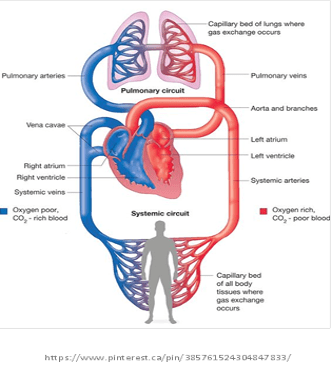
Describe the function of the following parts of the immune response:
1. Macrophages
2. Helper T Cells
3. Killer T Cells
4. Plasma B Cells
5. Memory B & T Cells
6. Suppressor T Cells
1. Macrophages - respond to the presence of the foreign invader, engulf bacteria and break it down or destroy it (apoptosis). Presents antigen of the invader to T cells to initiate the rest of the immune response. They also release cytokines which help initiate the immune response.
2. Helper T Cells - Receive the antigen from the APC (Macrophage) and divide into Killer, Memory and Suppressor T cells which now have the bacteria's antigen on their surface. Communicate to B cells that they need to divide into Memory & Plasma B cells with the bacteria's antigen now on their surface.
3. Killer T Cells - Kill the foreign invaders by way of cytolysis (Biological "Knife"). These are the cells primarily responsible for fighting cancerous cells.
- For Bacteria, Killer T cells inject perforin (the knife) which kills the bacteria
- For Cancerous cells/Virus infected, Killer T cells tell the infected cell to kill itself (apoptosis/cellular suicide)
4. Plasma B Cells - Produce antibodies coded to the foreign invader to help slow its spread. This causes clumping (agglutination) that allows the macrophages, neutrophils & killer T cells to catch up and destroy the bacteria.
5. Memory B & T Cells - Remember the foreign invader so the next time we get sick, our immune response happens faster!
6. Suppressor T Cells - Call off the immune response (attack) once the foreign invader has been dealt with. These mature later than other T cells.
What is the reason our jaw, throat or armpits might be sore when we are fighting an infection?
One reason is because we have large lymph nodes (tonsils & auxiliary lymph nodes) in our throat & armpits. Lymph Nodes store lymphocytes (a type of WBC), and when we are sick the amount of lymphocytes in our circulatory system increases & the lymph nodes work extra hard to filter & store them. This causes swelling & the soreness that we experience.
Someone who is Rh + can receive what type of blood (in terms of positive & negative)
Rh + individuals have Rh + & Rh - antigens and no Antibodies so they can receive both Positive & Negative blood.
Rh - individuals have Rh - Antigens and Rh + antibodies, so they can only receive Negative Blood.
What has roots as nobody sees, Is taller than trees, Up, up it goes, And yet never grows?
A mountain
A blood vessel is classified as a vein if it (structure & direction of blood flow):
and is classified as an artery if it (structure & direction of blood flow):
Veins: Contain valves & transport blood towards the heart.
Arteries: Have no valves & transport blood away from the heart.
The following substances have varying concentrations in Arteries, Veins & Capillaries. Identify which will vessels will have the highest concentrations of the following substances:
1. Oxygen
2. Carbon Dioxide
3. Wastes
Arteries: Highest concentration of Oxygen (except pulmonary arteries), Lowest concentration of Carbon Dioxide (except pulmonary arteries). All arteries (except pulmonary arteries) will contain a low concentration of wastes.
Veins: Highest concentration of Carbon Dioxide (except pulmonary veins), Lowest concentration of oxygen (except pulmonary veins). All Veins (except pulmonary veins) will contain a high concentration of wastes.
Capillaries: Varying concentrations of Oxygen & Carbon Dioxide (depends on if the blood is closer to the venule or arteriole end of the capillary bed). Capillaries are where wastes are removed from the body into the blood, therefore they would have a high concentration of waste.
Someone who is fighting a viral infection will probably have a higher concentration of the following blood components:
1. Erythrocytes - Red Blood Cells
2. Leukocytes - White Blood Cells
3. Platelets
4. Plasma
1. Erythrocytes - Red Blood Cells --> Responsible for carrying oxygen & wastes in our bloodstream
2. Leukocytes - White Blood Cells --> Responsible for fighting infection so there will be more of them when we are sick (fighting a viral infection).
3. Platelets --> Responsible for forming the plug when a blood vessel is damaged (clotting)
4. Plasma --> Responsible for transporting dissolved nutrients & minerals (calcium, chlorine, magnesium, potassium etc.)
what is Elephantiasis (disease of the Lymphatic System) and how does it affect us? And why does it happen?
What: Elephantiasis is a disease caused by a parasitic worm which infects the lymph nodes and blocks the flow of lymph throughout the body.
How: It causes enormous amounts of swelling in the affected person.
Why: If the flow of lymph is blocked, Lymphocytes with continue to be produced but will not flow through our system. This means the lymphatic vessels will receive increased pressure and cause the large swelling seen in those affected with the disease
What are the other names for people with the AB & O Blood Types?
AB - Universal Recipient/Acceptor
O - Universal Donor
Which artist has the best-selling music Album of all time?
Michael Jackson - Thriller (1982) 51.2 Million Copies Sold.
When an electrical impulse is sent through the heart it flows through four structures in a specific order, name these structures in order!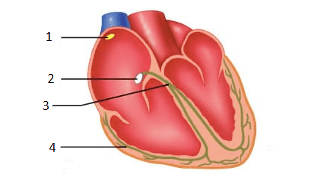
1. SA (sinoatrial node) --> Stimulate the muscle cells to contract & relax rhythmically (sets the pace of cardiac activity) AKA as the Pacemaker. SA node impulse causes both Atria to contract
2. AV Node (atrioventricular node) --> Receives signal from SA node & transmits it to the bundle of His.
3. Bundle of His --> Receives signal from AV node, relays signal to the apex of the heart and out to the Purkinje fibres
4. Purkinje Fibres --> Relay signal up the ventricles of the heart & cause the ventricles to contract!
What factors (related to blood volume, cardiac output & blood vessel diameter) will decrease your blood pressure?
Decreased blood volume = less blood flowing through arteries and thus less pressure (blood pressure).
Decreased cardiac output = blood flowing through arteries less often and thus less pressure (blood pressure).
Vasodilation = blood flowing through arteries more freely, thus less pressure (blood pressure).
How do vaccines stimulate our immunity? (must use "initiate our immune response" and mention the secondary (2º) immune response AKA 2nd time we get sick)
Vaccines allow our Macrophages & T Cells to develop antigens in response to the bacteria/virus we are being vaccinated for. T Cells then communicate with B Cells (Plasma B Cells) which create antibodies for the specific bacteria/virus. Finally, Memory B & T Cells remain in our circulatory system to identify the foreign invader.
The next time the bacteria/virus is detected, the premade Memory B & T Cells Initate our Immune response almost immediately. This means that the Secondary Immune Response (2nd time we get sick) will be much faster than the Primary Immune Response (1st time we got sick). We also might not show as many or as serious symptoms the second time we get sick since our body has adapted in response to the bacteria/virus.
What year was Mr. Taylor Born? (200 points)
What are the three cities in Alberta Mr. Taylor has lived in? (200 Points)
1. Y2K AKA The Year 2000
2. Calgary, Camrose & Edmonton, Alberta
What blood type does Patient 3 have? (At home for practice do the other patients yourself)
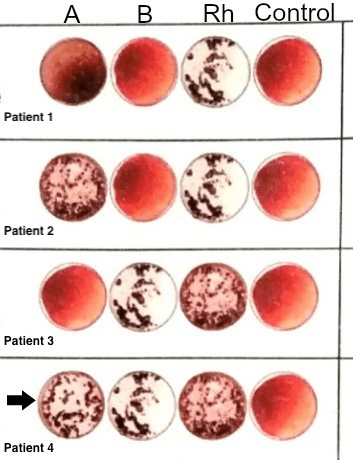
B +
Antibodies are added to each plate
Clumping = presence of that type of blood
There is no clumping in the A group & there is clumping in the B group = B blood type
There is clumping in the Rh group = positive blood type (presence of antigen). negative blood types would never clump in the Rh group because Rh - individuals do not contain any antigens.
Of the Big 3 universities in Alberta, which is oldest?
University of Alberta, University of Calgary or University of Lethbridge
University of Alberta (1910) however, Burman University (Lacombe Alberta) opened in 1907
Compare veins, arteries & capillaries based on their structure
Bonus 250 points if you can tell me what advantage capillaries have in terms of nutrients, wastes & gas exchange in correlation to their thickness.
Arteries: Largest in size, thick layer elastic fibres & muscles, small lumen
Veins: Middle in size (smaller than arteries, bigger than capillaries), thin layer of elastic fibres & muscles, large lumen
Capillaries: smallest in size, thinnest walls (one cell thick), & smallest lumen
Bonus: since capillaries are one cell thick, their structure facilitates the diffusion of molecules (nutrients, wastes & gases) across the membrane of the capillary!
Systolic Blood Pressure is the measure of: (ventricles contracted or relaxed, highest or lowest blood pressure in your arteries)
Diastolic Blood Pressure is the measure of: (ventricles contracted or relaxed, highest or lowest blood pressure in your arteries)
And blood pressure is written as (which number is on top and which is on the bottom)?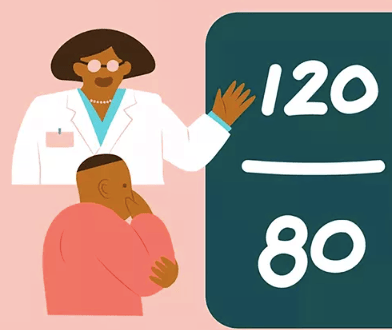
Systolic Blood Pressure is the measure of your blood pressure when ventricles are contracted (systole) and represents the highest pressure in your arteries
Diastolic Blood Pressure is the measure of your blood pressure when ventricles are relaxed (diastole) and represents the lowest pressure in your arteries
And blood pressure is written as systolic over diastolic
Each group gets a section of the whiteboard, you must draw the complete cascade of biological molecules for the clotting process.
1. A Blood vessel is damaged and Platelets form the initial plug in the blood vessel. Some of the platelets rupture & release chemicals that combine with other blood components and produce Thromboplastin (Enzyme).
2. Thromboplastin combined with Ca2+ ions to activate prothrombin (plasma protein) to produce thrombin.
3. Thrombin activates fibrinogen to its active form, Fibrin.
4. Fibrin collects in threads that form the fabric of the clot.
Name at least three teachers at Abe that taught Mr. Taylor when he was a student.
Ms. Arrell (ELA 10), Mr. Aman (ELA 30)
Mme. Lavallée (FLA 20), Mme. Tremblay (Études Sociales 10, 20 & 30) Mr. Davison (Science 10), Mr. Feller (Chem 30), Mme. Brunelle (Math 20)
Mr. Hayes (PE 30)
What was the Rh factor named after AKA what species did they isolate the factor in initially? (must be the exact species to get the points)
The Indochinese Rhesus macaque monkey
Name atleast four guests that Bobbi Althoff has had on the "really good podcast"
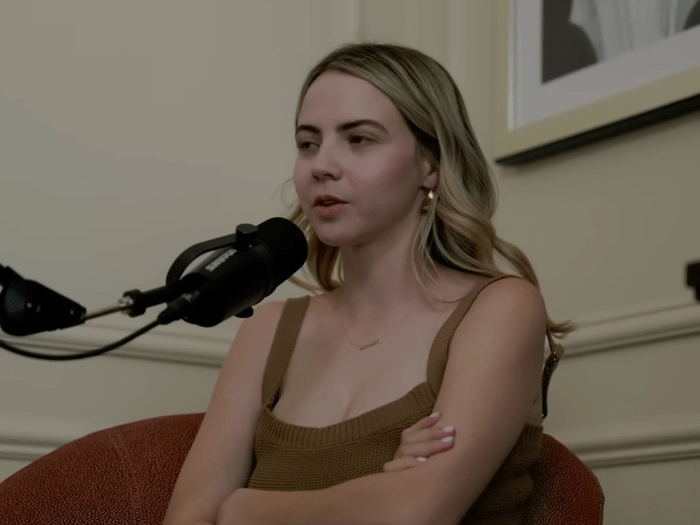
Rick Glassman, Funny Marco, Drake, Lil Yachty, Mark Cuban, Tyga, J Balvin, Shaq, Charlie Puth, Jason Derulo & Offset, Sean O'Malley, DDG, Dax Flame, Polo G, Jojo Siwa, Peso Pluma, Matt Rife, NLE Choppa, YG, Jelly Roll, Meghan Trainor, Saweetie, Ari the Don, Ryan Garcia, Jimmy Kimmel, Wiz Khalifa, Bobby Flay, Michael Cera, Jessica Alba, Bobby Lee, Rainn Wilson, Sukihana, Bobby Flay, Jelly Roll, YG, NLE CHOPPA, Matt Rife, Peso Pluma, JoJo Siwa, Polo G, DDG, Sean O'Malley, Toosii, Druski, Lili Reinhart